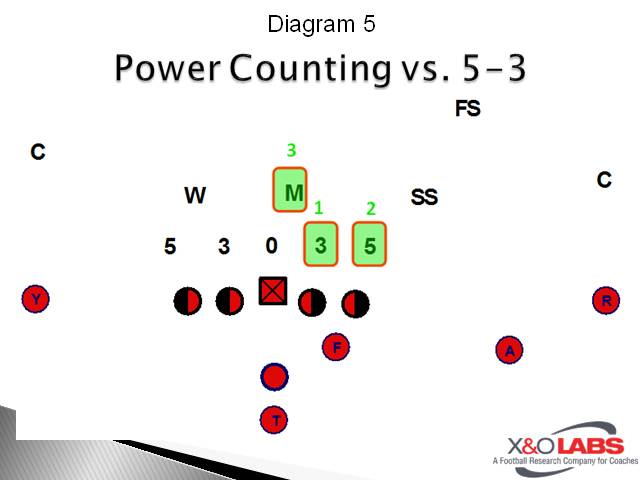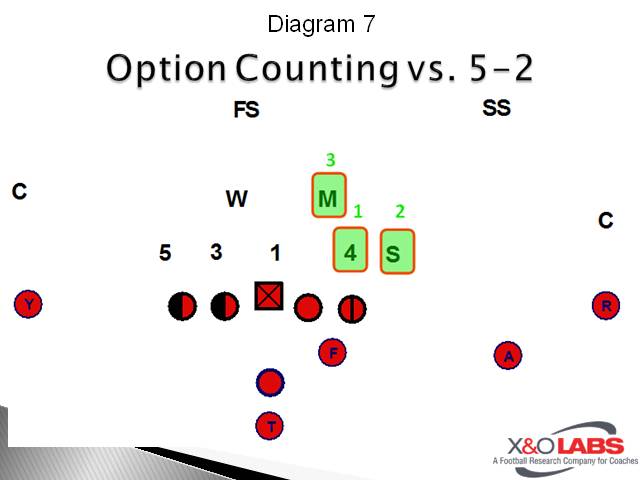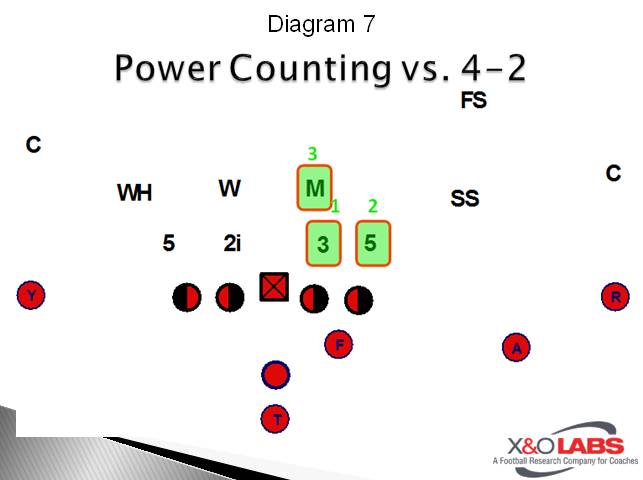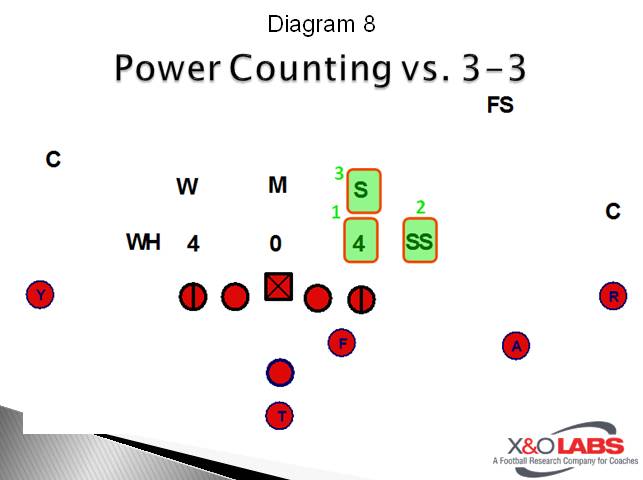By Scott Girolmo - @CoachSGirolmo
Offensive Coordinator
Liberty High School (VA)
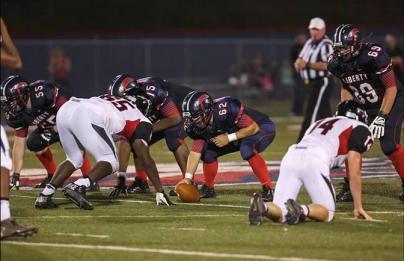 Editor's Note: Coach Girolmo grew up as a player for his father Steve Girolmo at Livonia High School in Western New York. A graduate of Cortland State (D-III - NY) he has coached at Castleton State College, and Western New England University as well as made stops in high school at his Alma-Mater Livonia and Liberty high School in Bealeton, VA. In 2012 he took over the offense at Liberty and has installed an ever-evolving hurry up no-huddle philosophy that mixes schemes from across the spectrum. As the Offensive Coordinator in their 2013 campaign the Eagles offense averaged 34.2 points per game, and was the 10th ranked offense in VHSL 4A. Scott is a diehard clinic enthusiast and encourages interactive Q & A regarding any of his contributions to the site.
Editor's Note: Coach Girolmo grew up as a player for his father Steve Girolmo at Livonia High School in Western New York. A graduate of Cortland State (D-III - NY) he has coached at Castleton State College, and Western New England University as well as made stops in high school at his Alma-Mater Livonia and Liberty high School in Bealeton, VA. In 2012 he took over the offense at Liberty and has installed an ever-evolving hurry up no-huddle philosophy that mixes schemes from across the spectrum. As the Offensive Coordinator in their 2013 campaign the Eagles offense averaged 34.2 points per game, and was the 10th ranked offense in VHSL 4A. Scott is a diehard clinic enthusiast and encourages interactive Q & A regarding any of his contributions to the site.
We are a hurry-up no huddle offense, that runs multiple personnel groups, formations as well as a mixture of schemes from across the offensive spectrum. Our most effective run-schemes the past two seasons have been our power runs. Our identity has always been power oriented in my 3 years here at Liberty. Knowing this, I made a point in taking over the offense in 2012 to find ways to incorporate that into some of the new innovative backfield and perimeter schemes I wanted introduce. Thanks to the help of some bright coaching minds, I was able to hybridize my favorite backfield action – the shotgun inside mesh read and pitch phase, with the power o run scheme. The result, I believe is a very sound, and formidable run play that can yield phenomenal results for teams with sub-par talent, and a blue-chipper’s alike. Not only will this make a major impact at the high school levels, but I believe that it will explode in the college ranks, when coordinators with agile and athletic QB’s get their hands on it.
The surface run scheme for our 5 offensive linemen is the same in our power triple as it is in our power hand-off play. This allows us to practice, and play much faster as those guys up front don’t have much thinking to do. This will fall in line with many offenses looking to go hurry-up, and also those that are lacking talent/intelligence or practice time. Creating confidence in their roles on each play allows those offensive linemen to play to their maximum speed and effort. The magic happens with our “tags” for inside mesh read, and triple option. When we begin to change the moving pieces behind our surface, we not only create extra gaps with the pulling guard, but we free up extra blockers by reading 2 defenders play-side. Our option counting system can even be combined with our power counting system to give our QB the ability to check to a power triple against a number’s or alignment disadvantage. In our option counting system, we teach our kids that the first player from the play-side tackles NOSE – OUT is our GIVE key. The next most dangerous defender from the GIVE KEY- OUT is our PITCH KEY. Below is an example of our option counting system against a 2x2 formation (Diagrams 1-4).
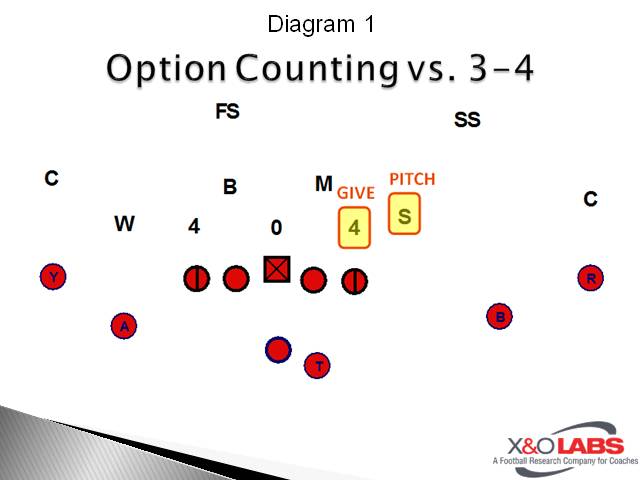
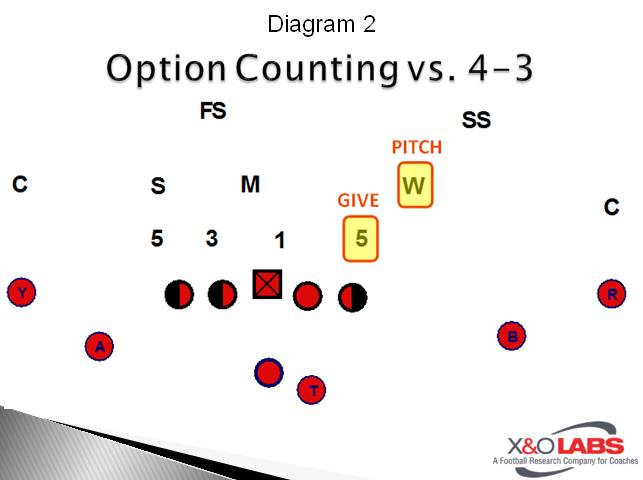
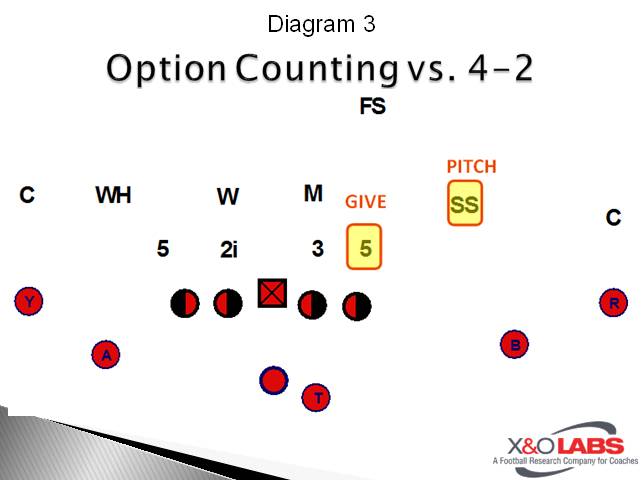
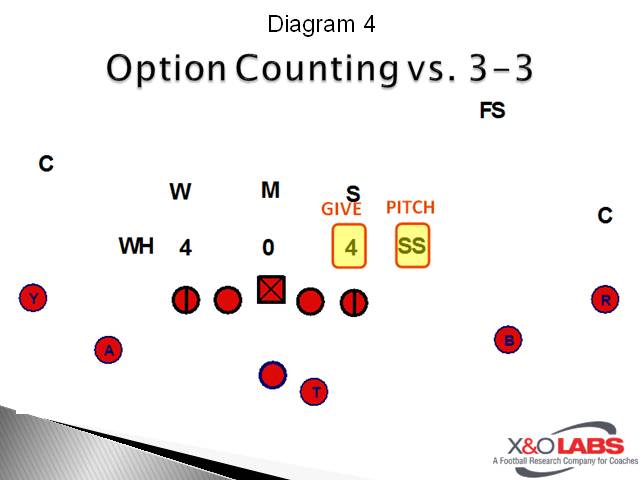
As you can see, some alignments are more advantageous than others. We use a very broad range of formations to help create advantages where none exists. This is also evident in our power counting system. We use the power counting system to both designate where the play-side combination block will occur, and to alert to where the puller and runner attack points are. Our play-side tackle dictates where that combo occurs by recognizing the technique, and anticipating the reaction of the 1st defender outside of the adjacent guard. He will down block, or call for a combo on that #1 player. If that player is a 4 tech (head up on him), the Tackle will base zone drive him himself with a B-GAP attack point as his target. The 2nd most dangerous defender is blocked by our fullback/h-back, and the #3 defender is the target of our pulling back-side guard. Below is an example of our 2-back power counting system (Diagram 5-8).
